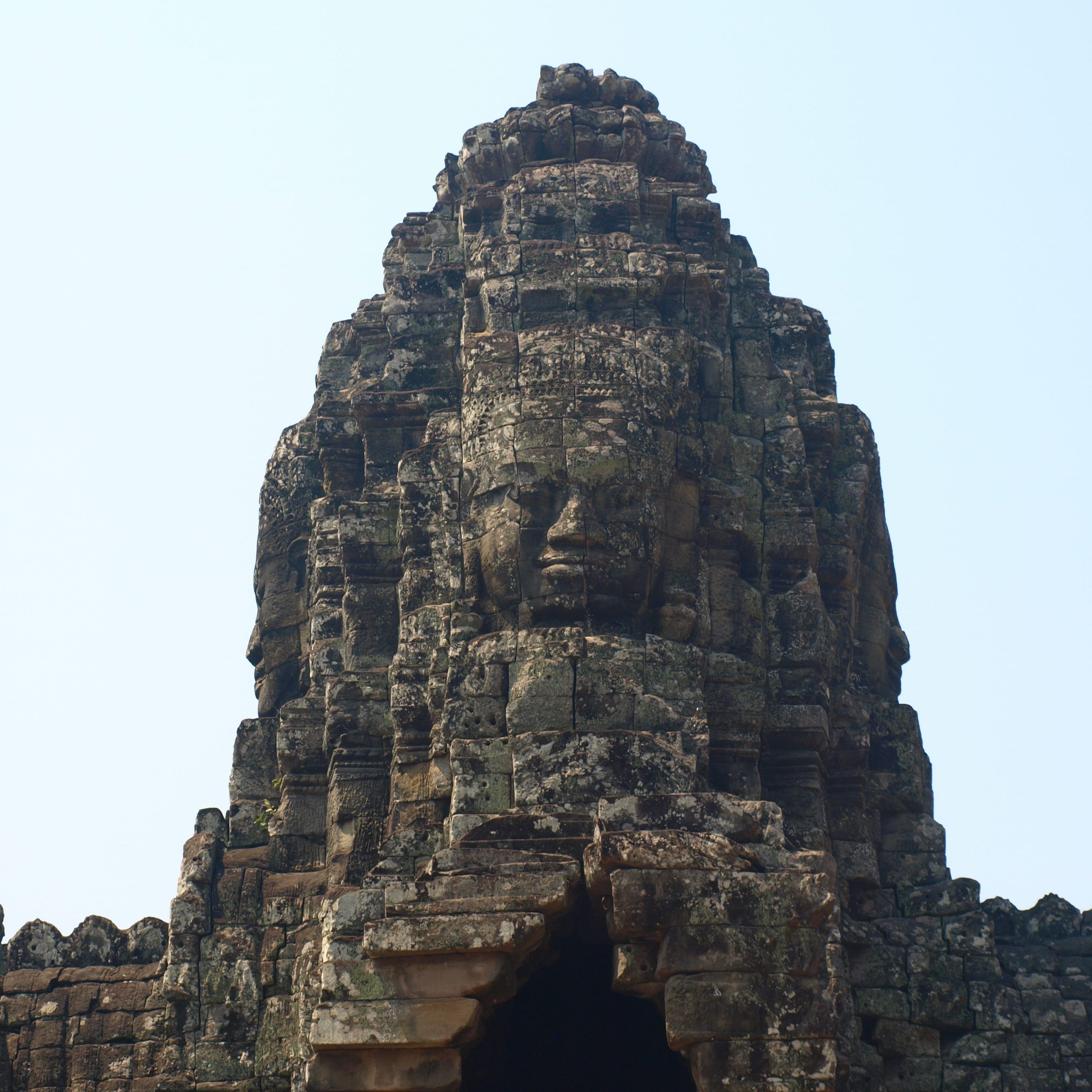
Leaving „Megalopolis“ Bangkok we entered Cambodia & stayed in Siem Reap, the city near the Angkor area where you’ll find the largest religious site worldwide surrounded by lots of temples … ruins … more ruins … Sometimes we felt like diving into an archaeological adventure – well: not like Indiana Jones of course, but there were some sites & moments …
Compared to Bangkok’s golden Buddhas there are only Buddhas made of stone in Angkor as well as stony temple dancers, stony guardians & lot of stony Hindu gods & goddesses.
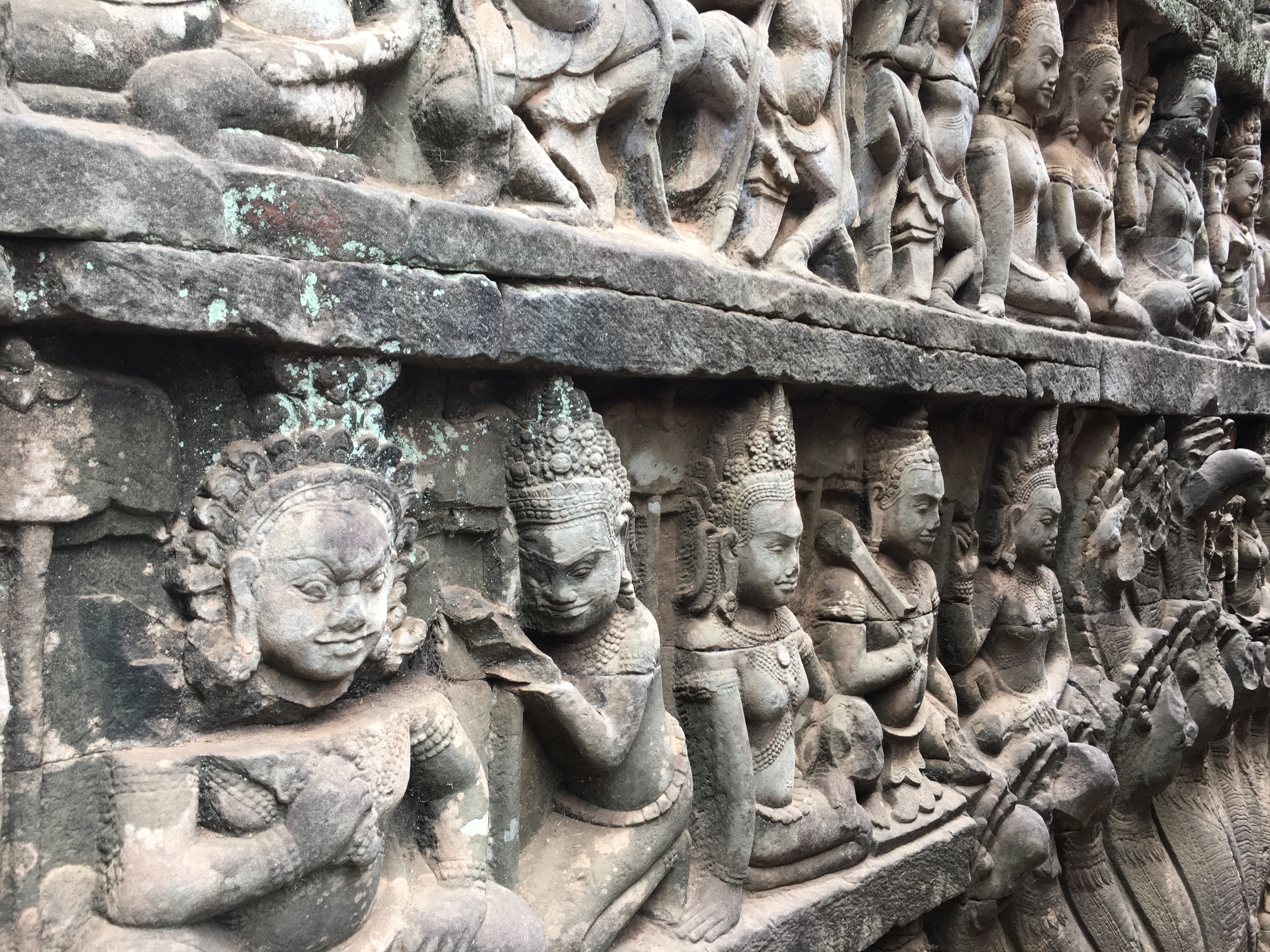

Angkor was the centre of the Khmer empire during the 9th to 15th century. In the beginning the Khmer empire was characterized by Hindu religion: from the 12th century, however, Buddhism was favoured by the Khmer rulers.
In Angkor there are lots of Buddhas to be found: even after the decline of the Khmer empire Angkor was inhabited & Buddhist monks & nuns lived in – most of – the temples. So let’s have a closer look at Angkor’s Buddhas!
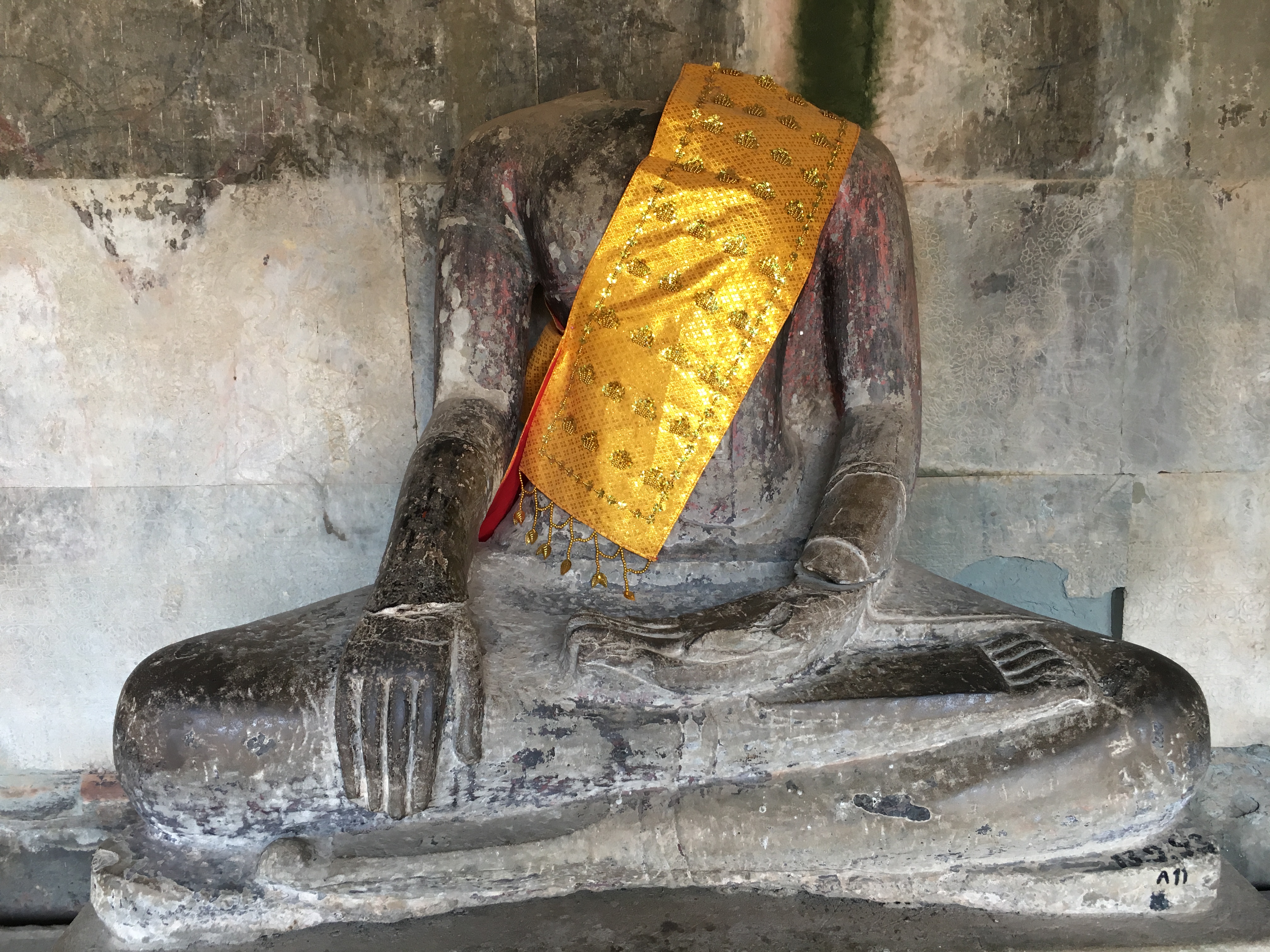
… & eher is also the golden touch!
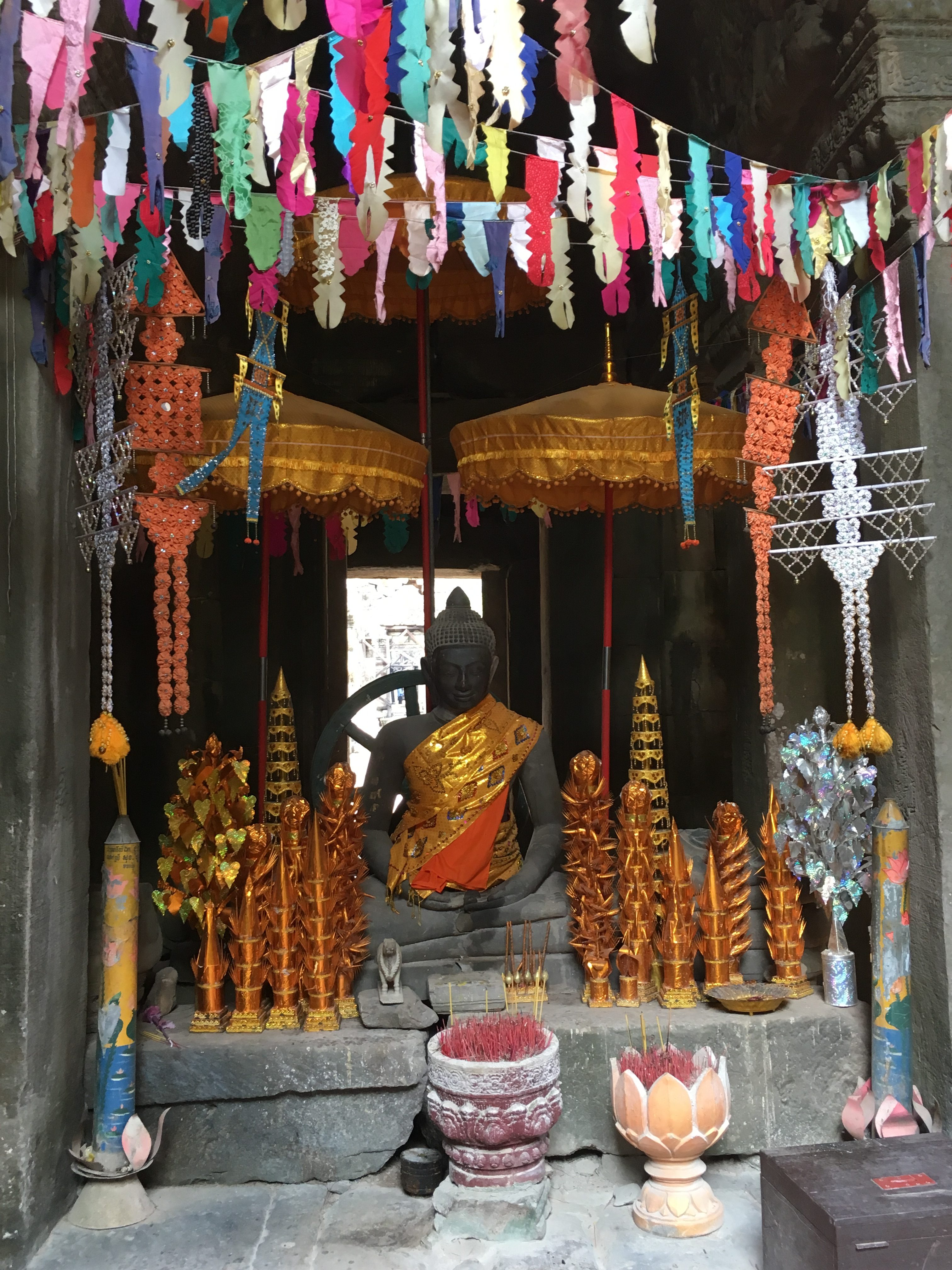
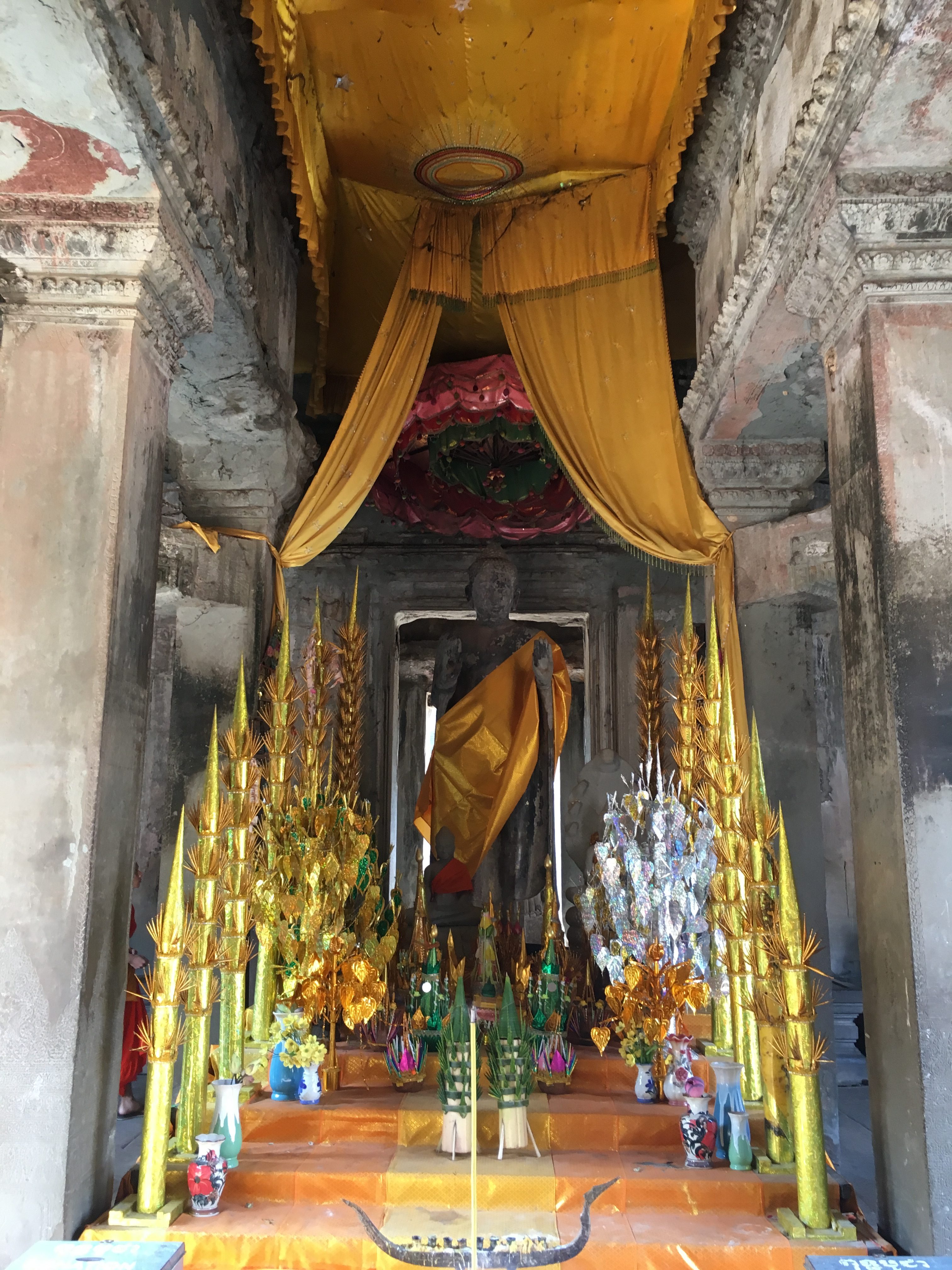
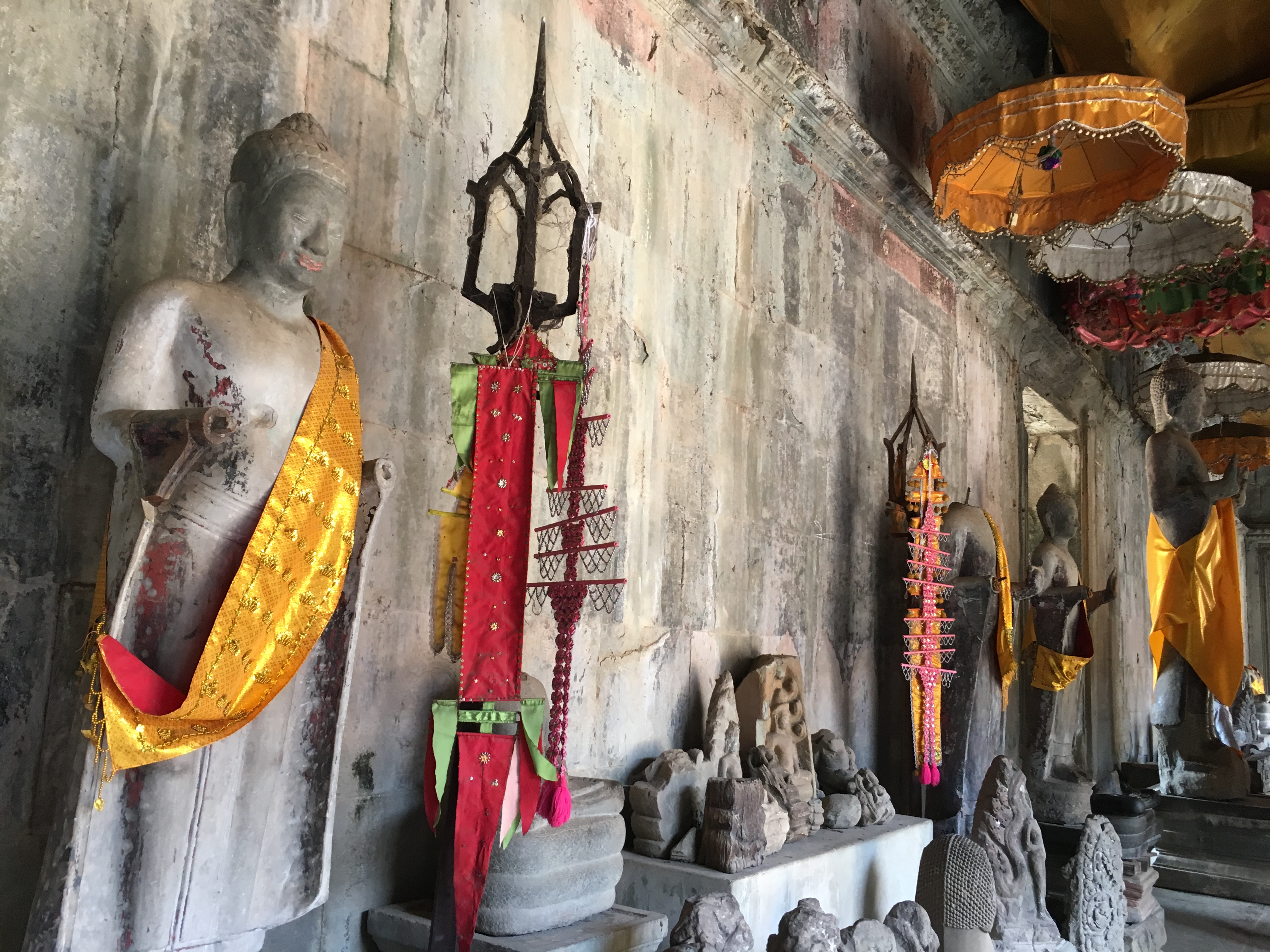
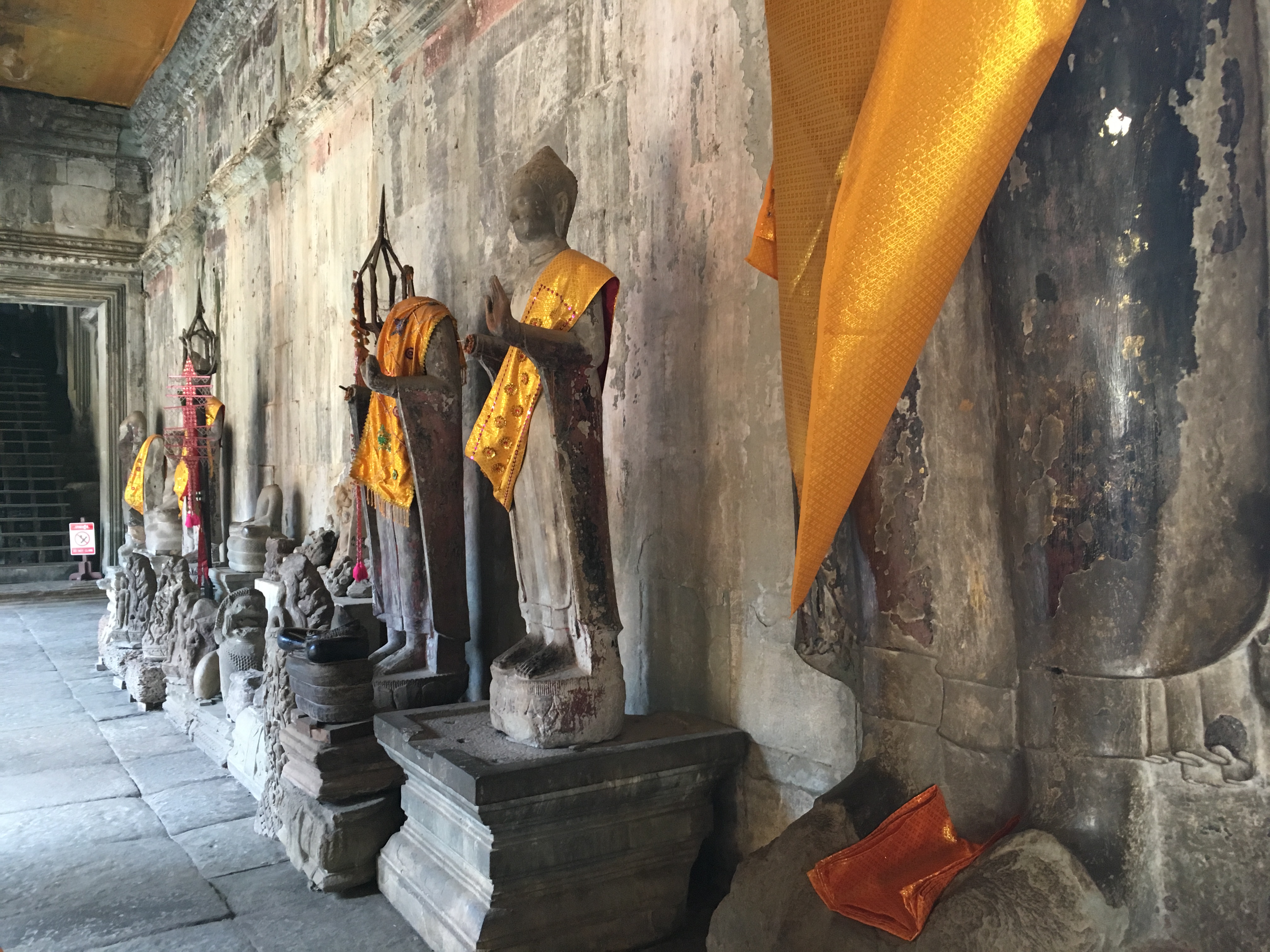
All that remained from Angkor’s heyday is made of stone. Well … the only buildings made of stone back then were temples & monasteries always erected in the same compound. Any buildings & statues made of wood (the rulers’ palaces, the houses of more or less wealthy people etc.) are long gone in the hot & humid Cambodian climate. (We only know about them by historic reports written by foreign visitors & travelers & ambassadors.)
Angkor’s centre covers about 200 km² w/ about 1.000 holy sites (mostly ruins) while „Greater” Angkor was about 1.000 km². During the Khmer empire up to 1 million people lived in this area.
The largest religious site – worldwide – is Angkor Wat (about 2 km² & up to 65 m high!).
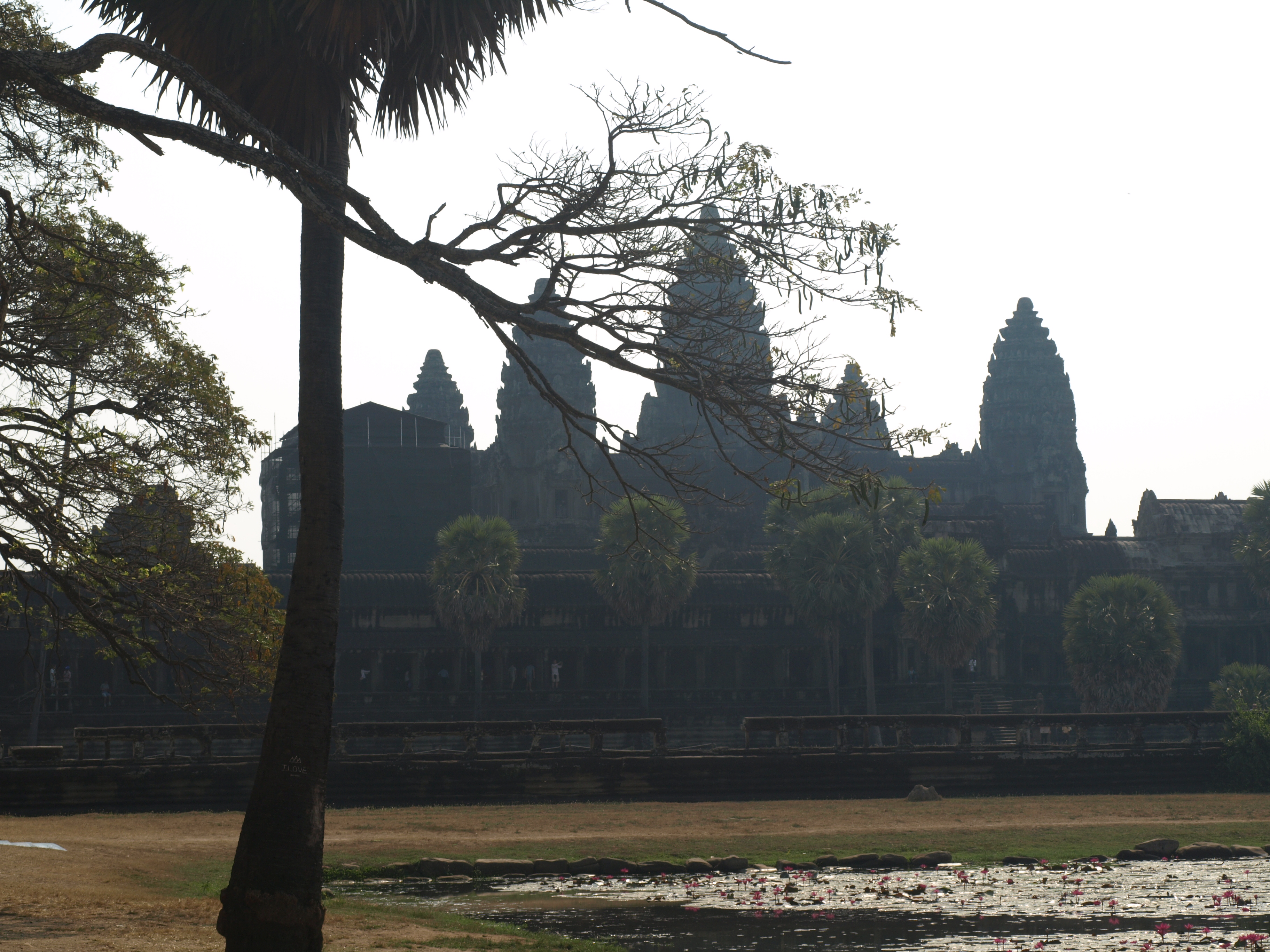
We visited temple sites like:
- Angkor Wat
- Angkor Thom
- Bayou
- Banteray Kdei
- Ta Prohm
- Ta Keo
- Baphuon
- Preah Khan
- Preah Neak Poan.
… & of course this is only a short list of all the temples & ruins that are scattered in the Angkor area.
Angkor Thom was the capital of the Khmer empire. Temples like Bayou & Baphuon are inside the walled city. Also in Angkor Thom only temples made of stone & religious sites like the large terraces survived.
Let’s start w/ some impressions from the temples (& sometimes also from the tourists & visiting Buddhist monks & nuns):
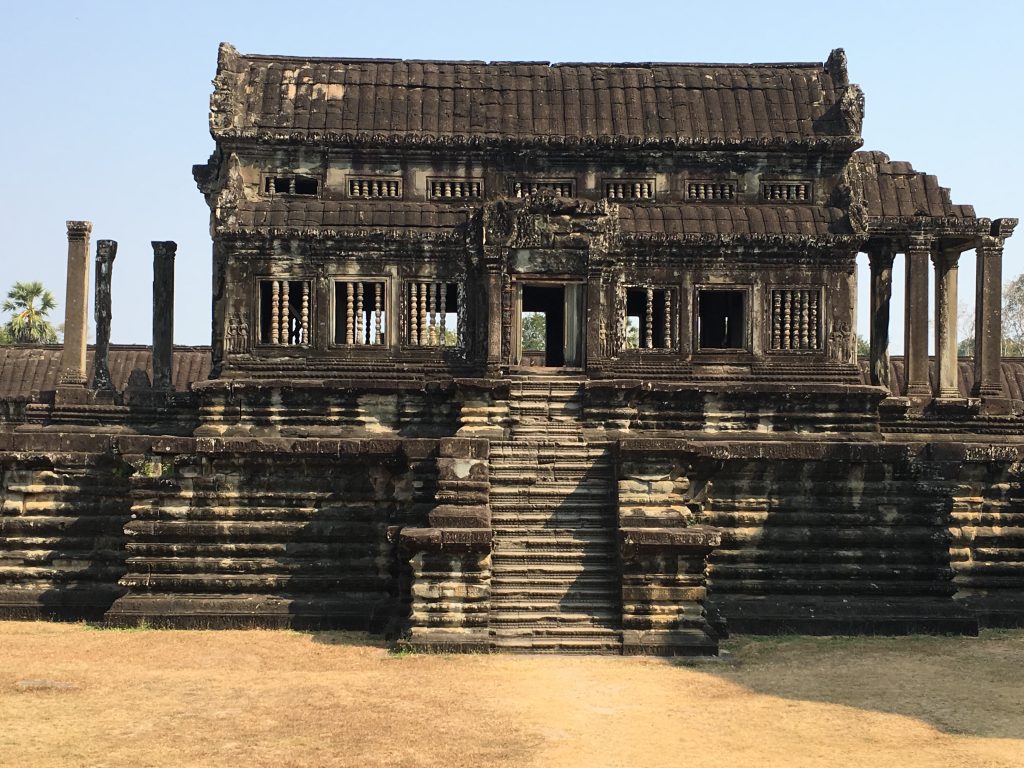
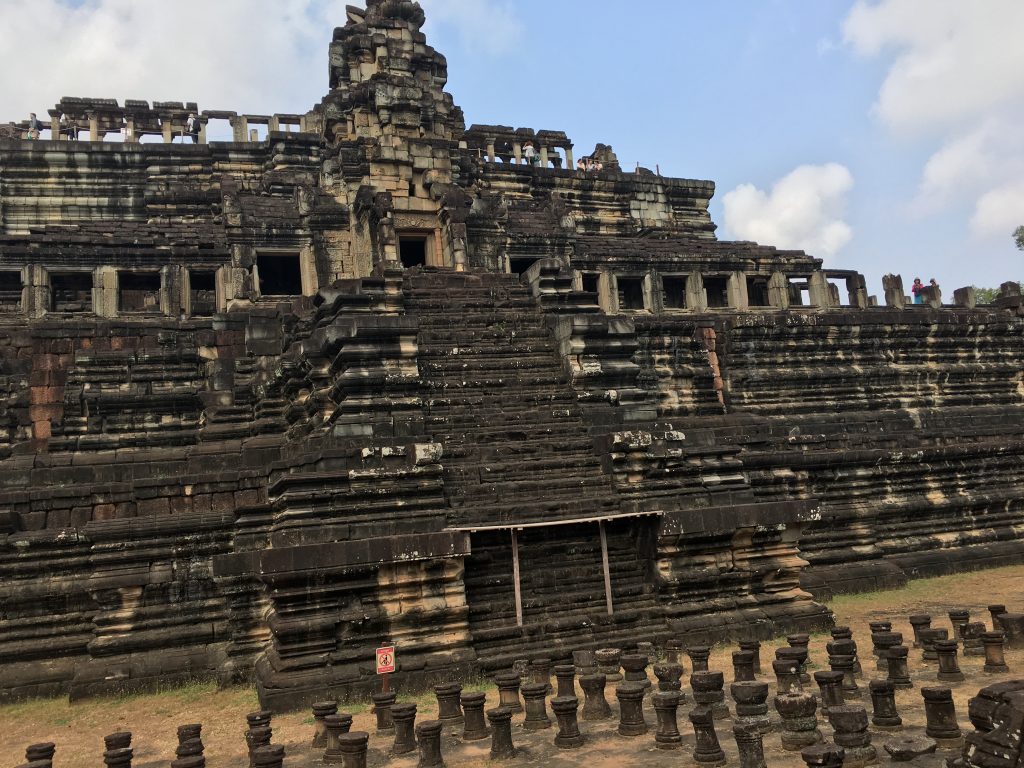
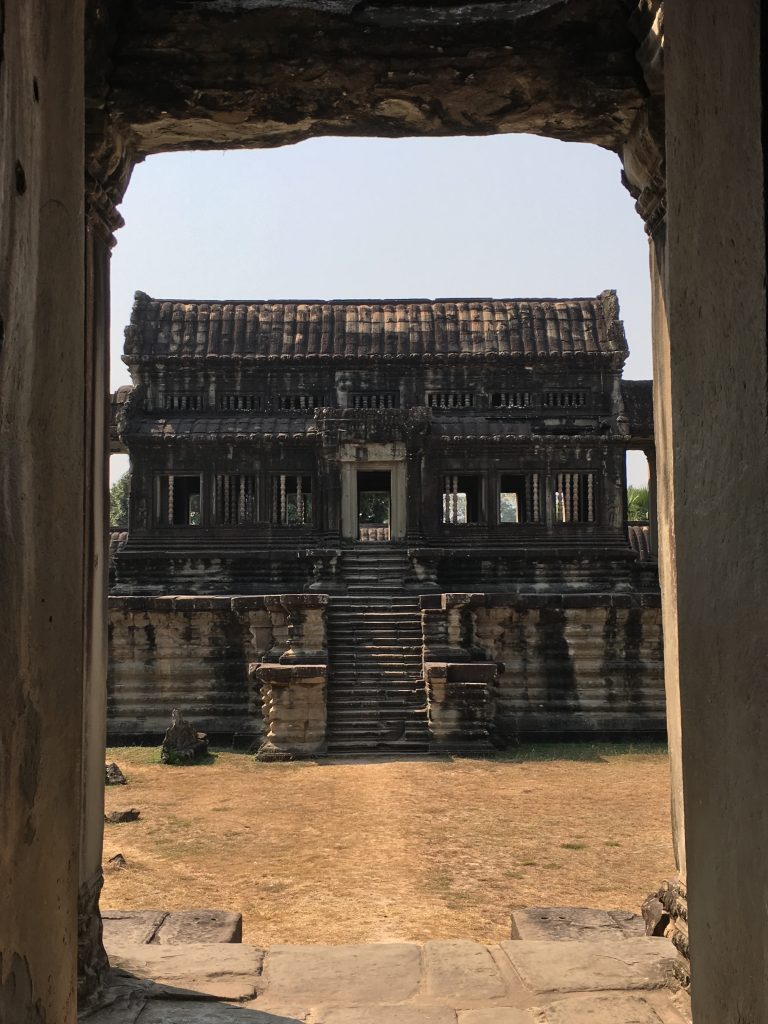
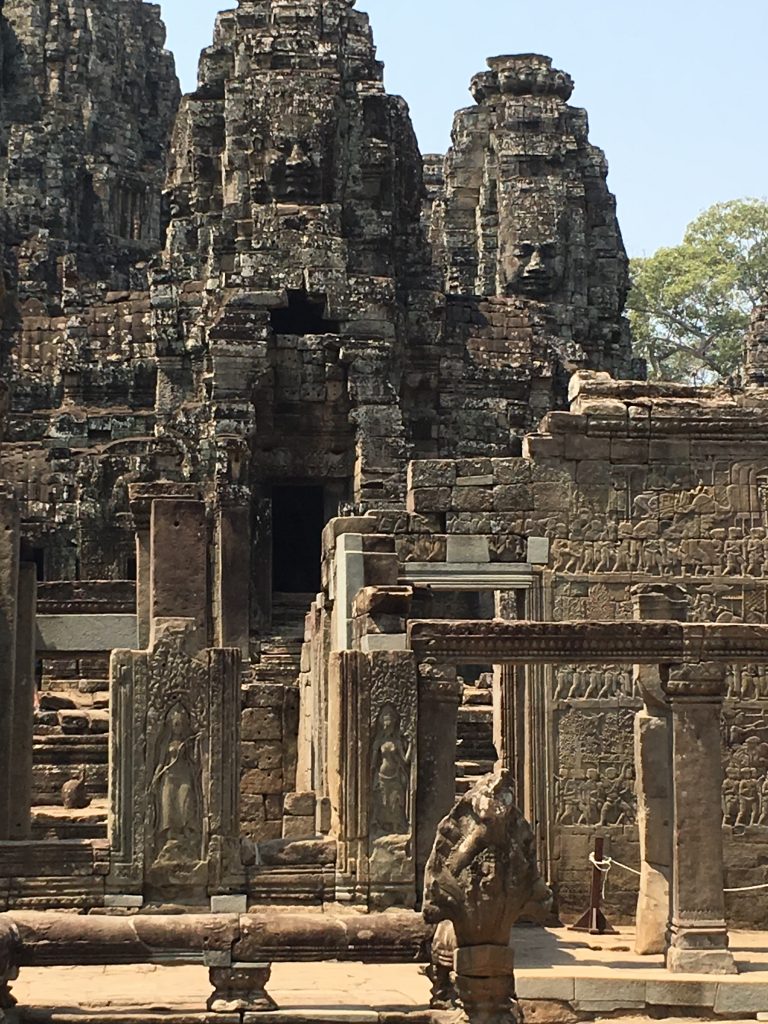
Always have in mind that everything is strictly symmetrical … & that it is about climbing stairs … & there are „endless“ colonnades …
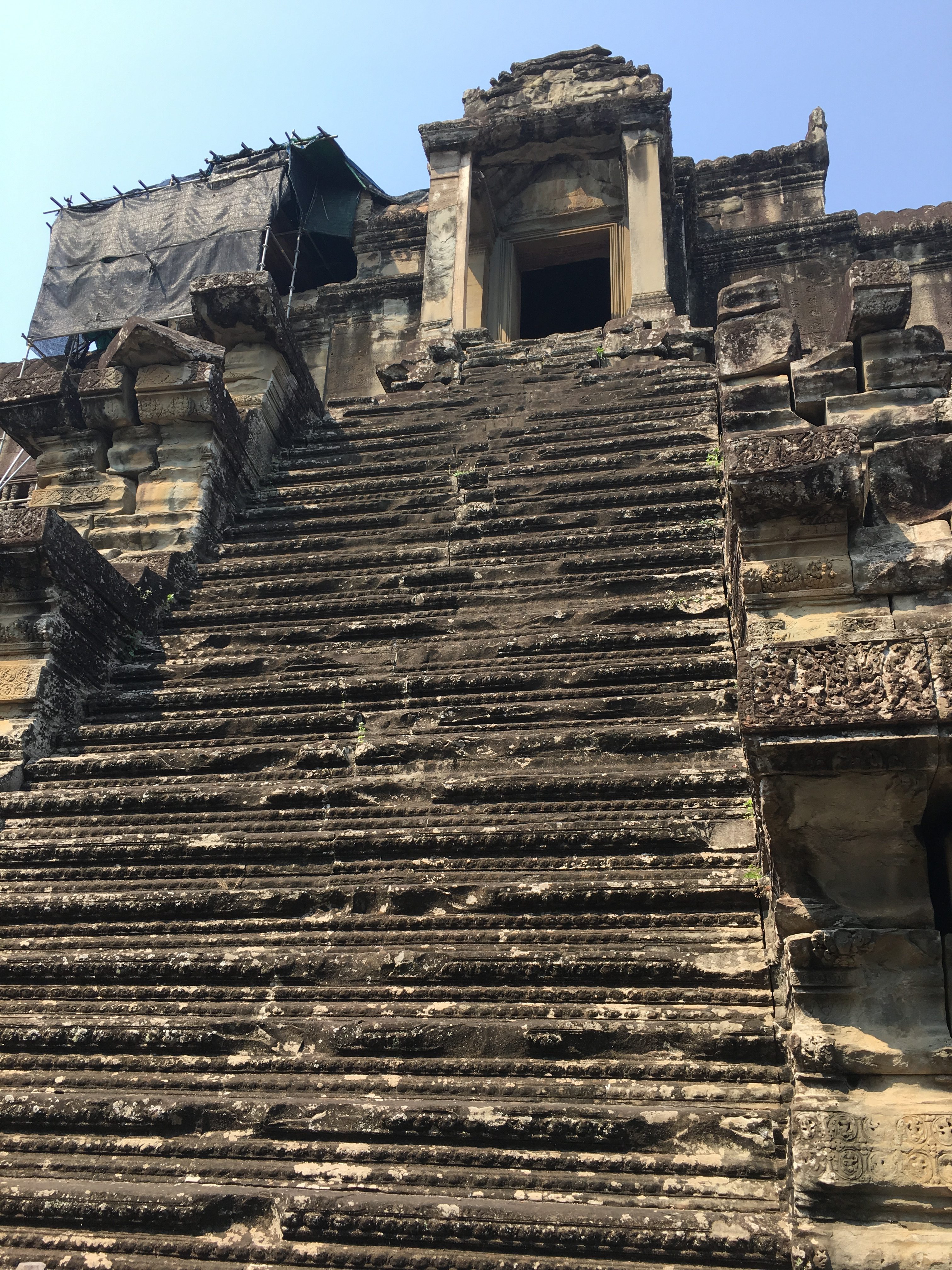
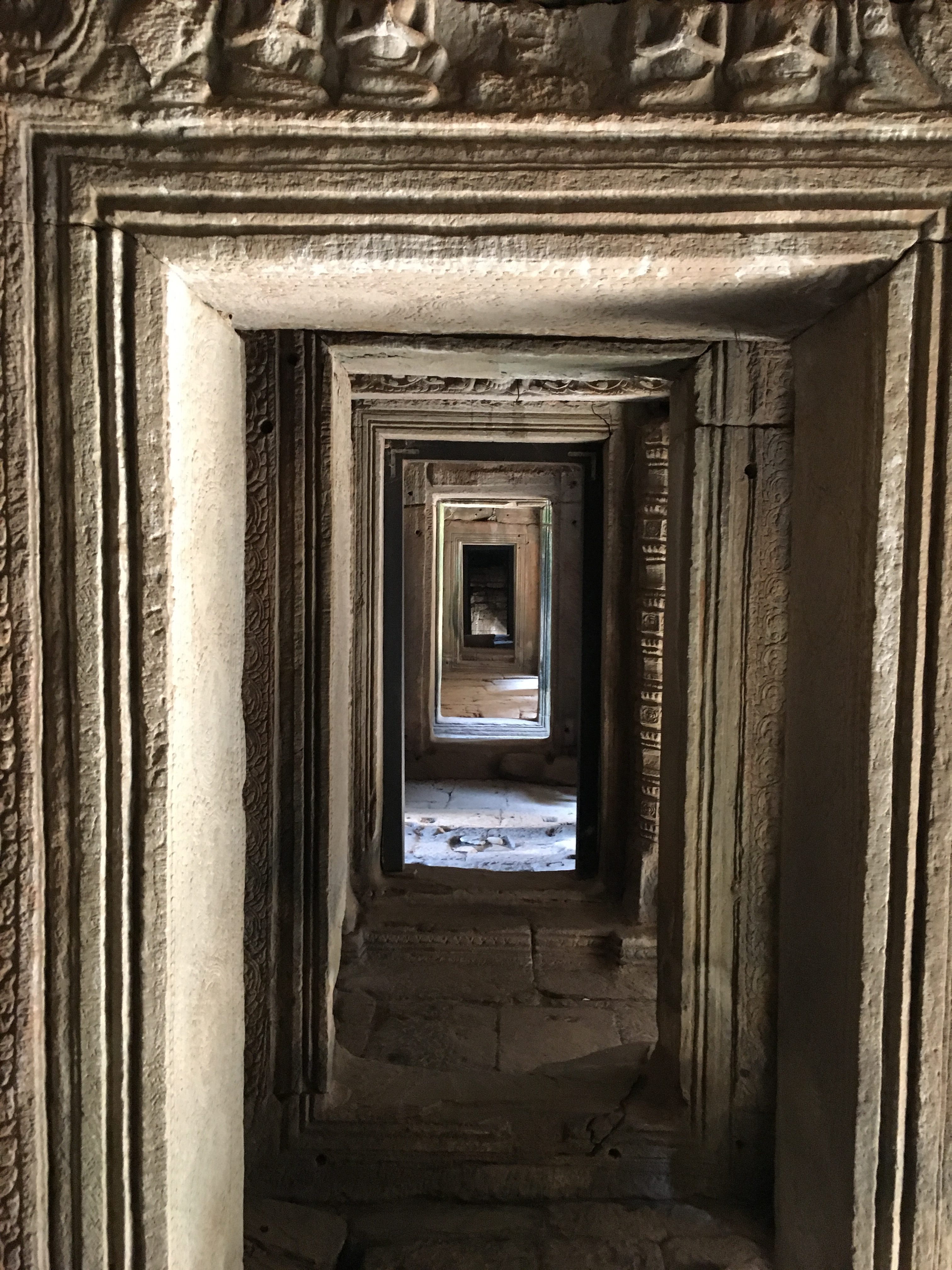
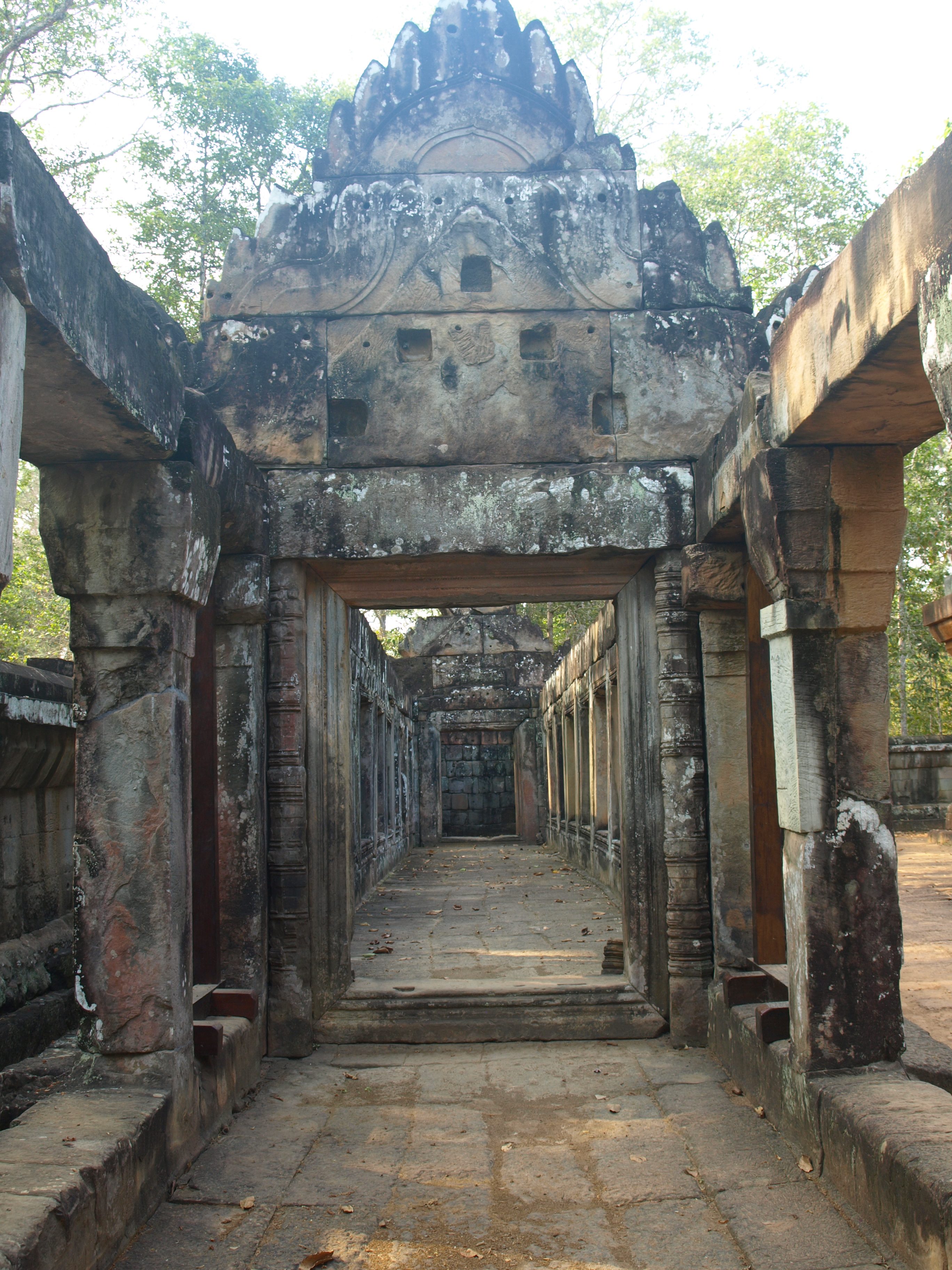
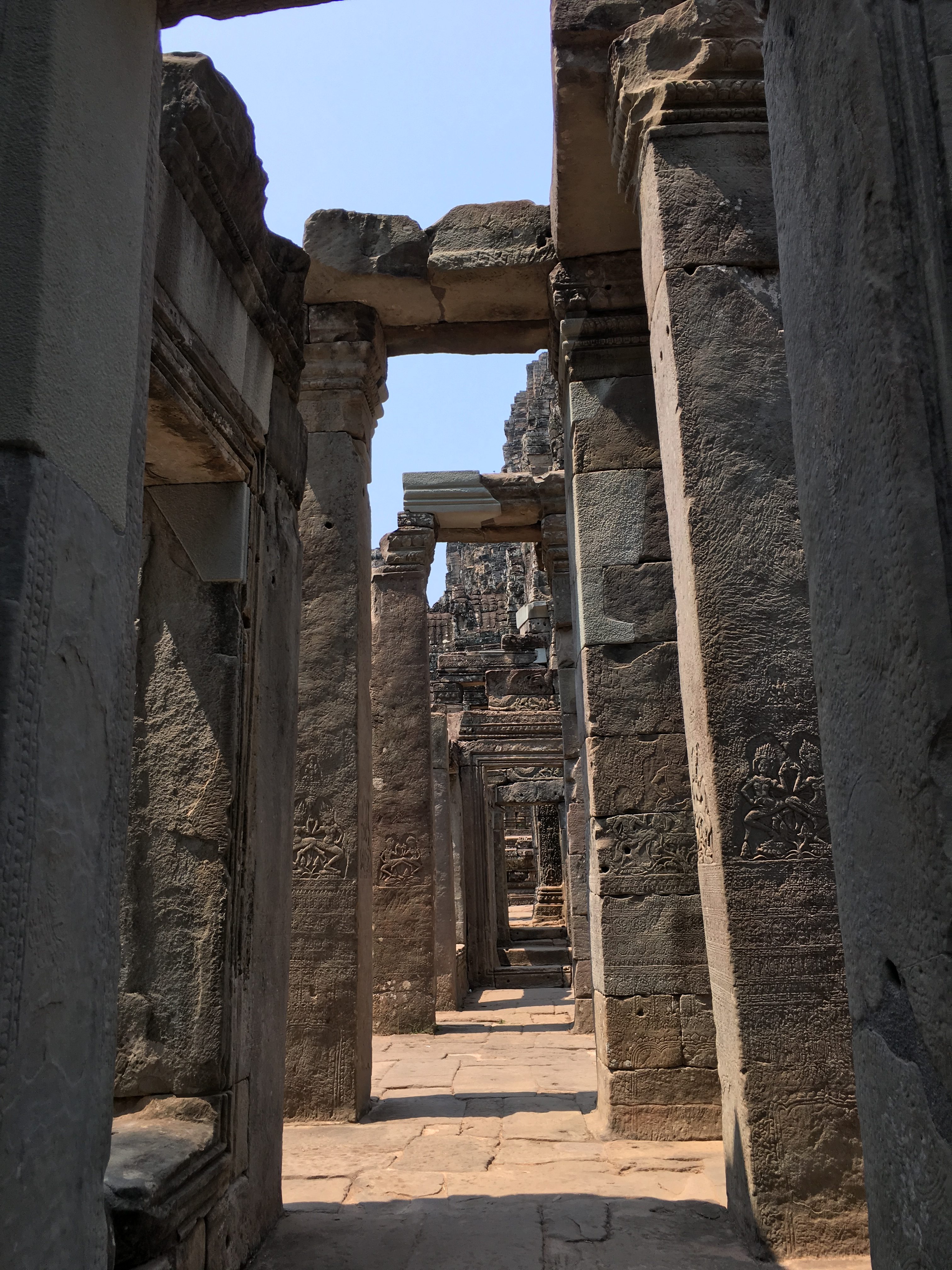
… & rows of windows, bricked windows:
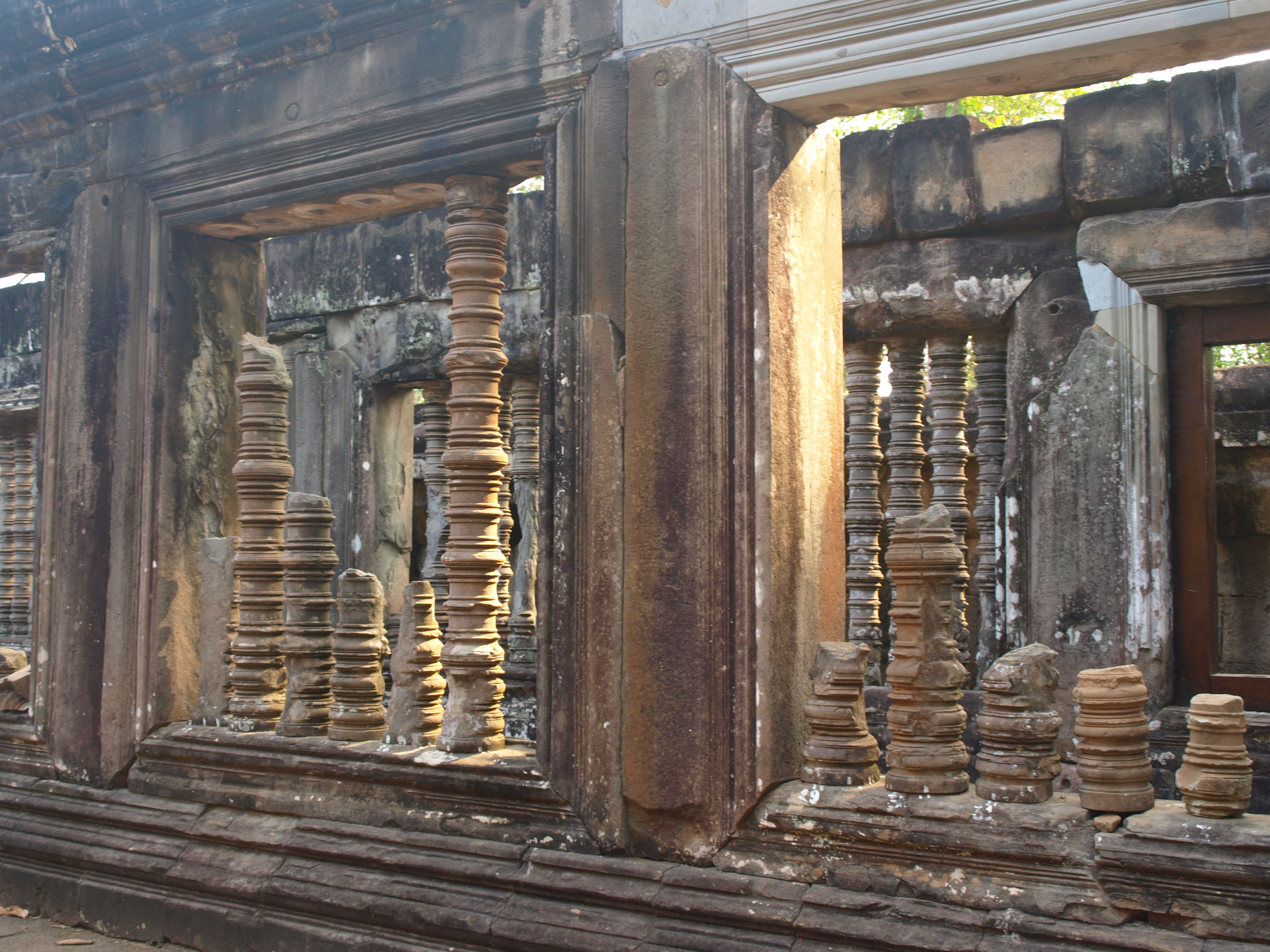
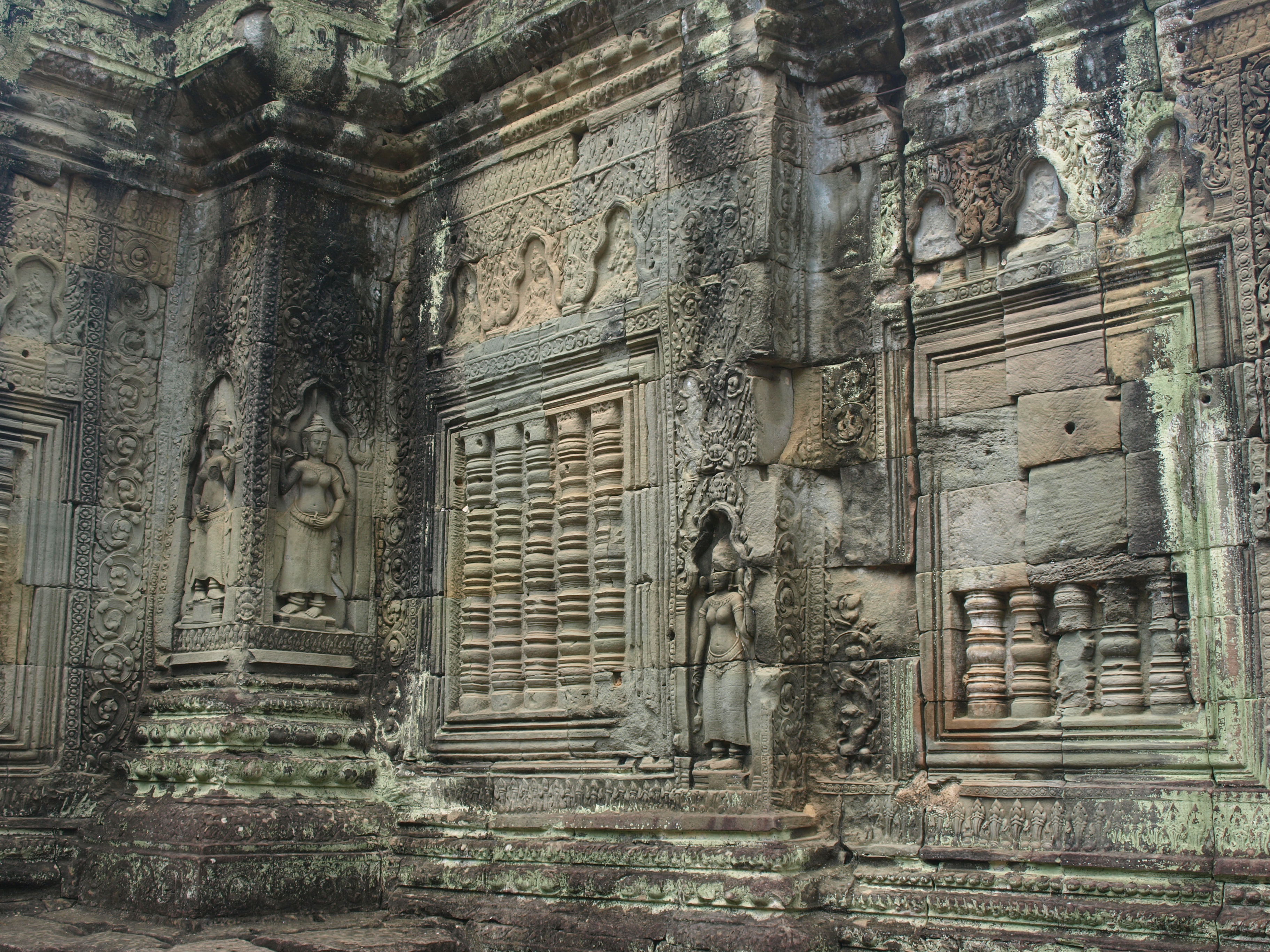
Before furthermore admiring the walls filled w/ reliefs of Hindu gods & goddesses, of epic battle fields & lots of temple dancers there is Ta Prohm (& some similar sites …) where you really get near to an Indiana Jones feeling …
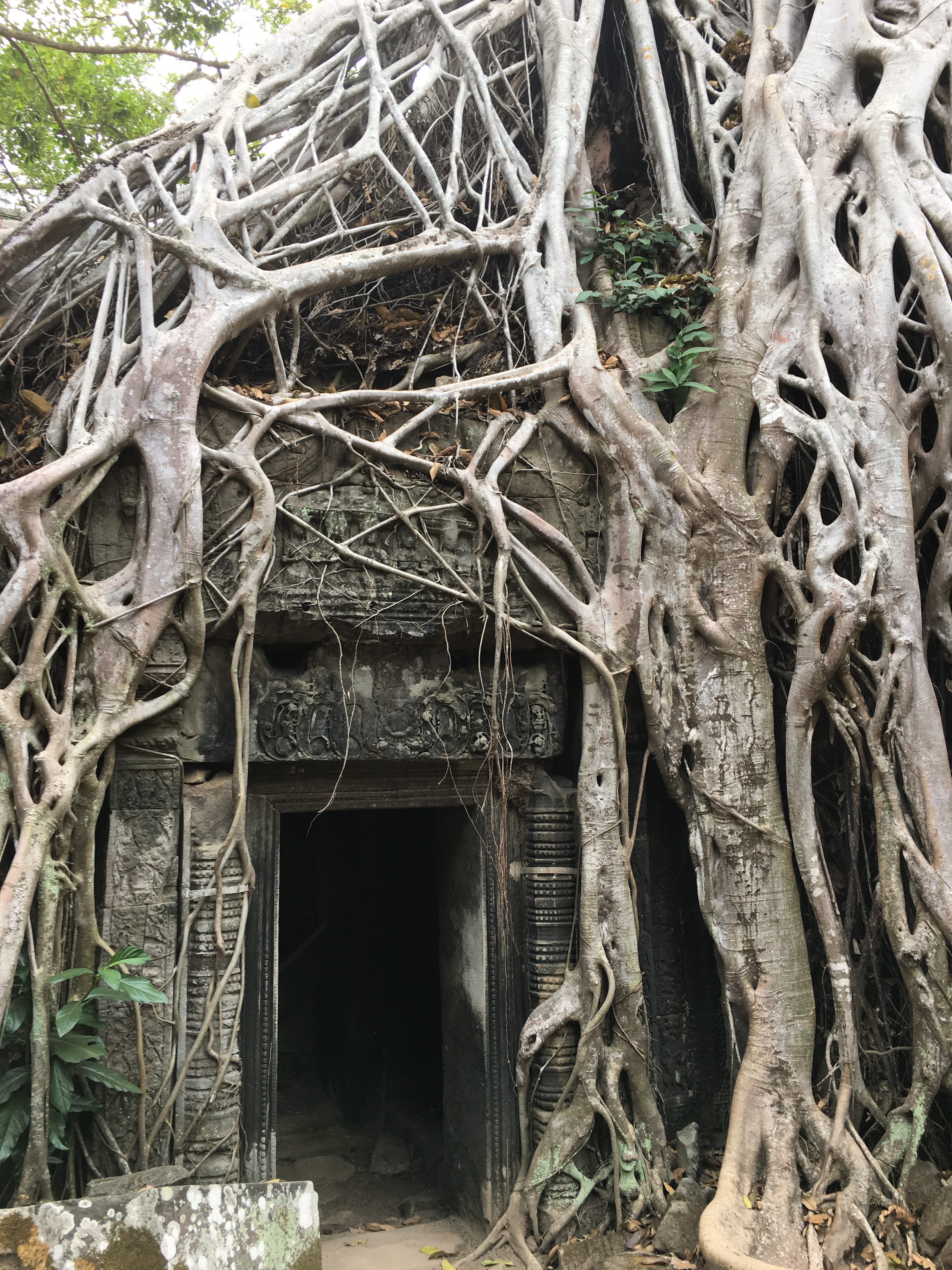
… amid the trees & woods …
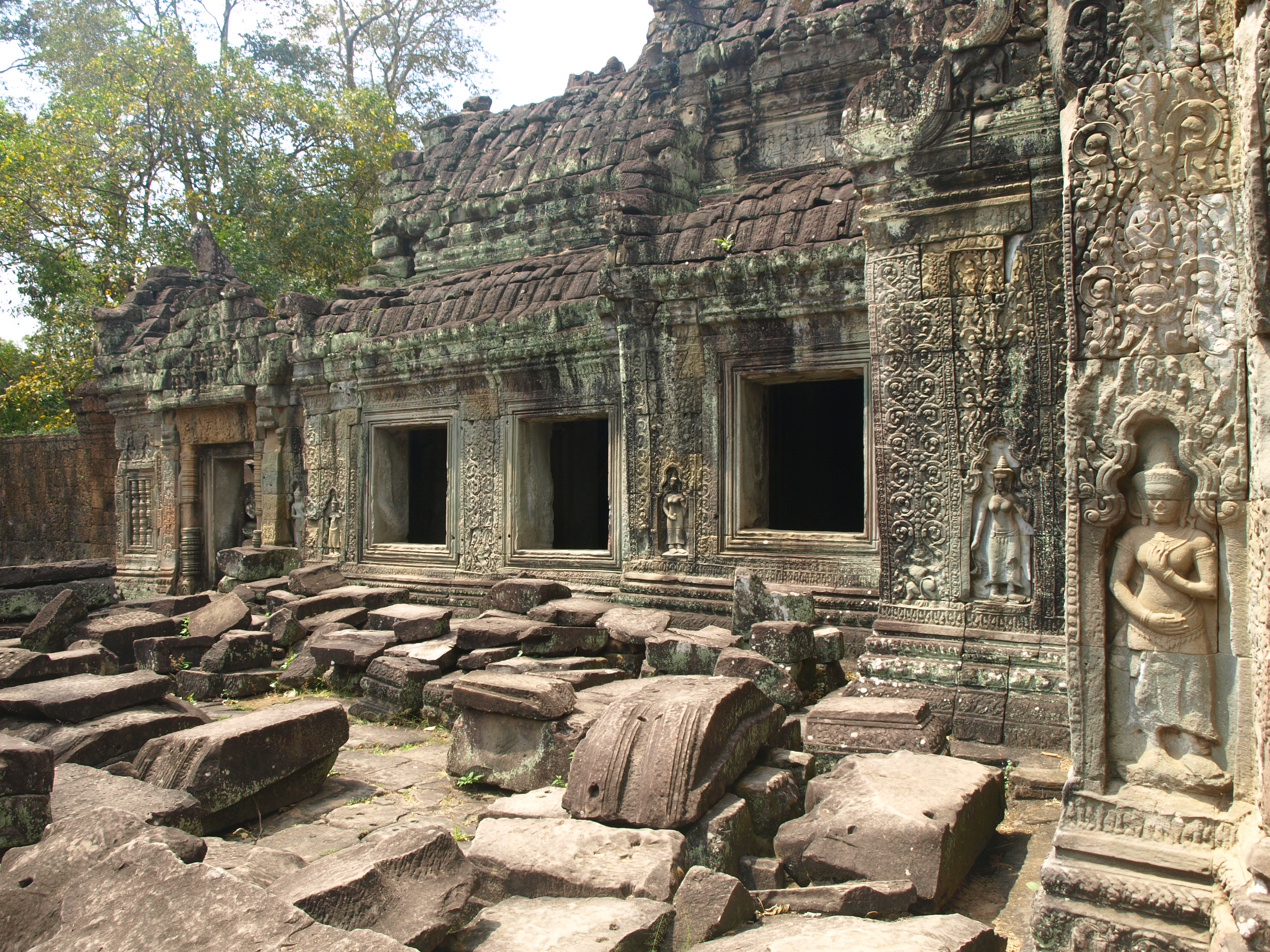
… since centuries trees overwhelming the ruins …
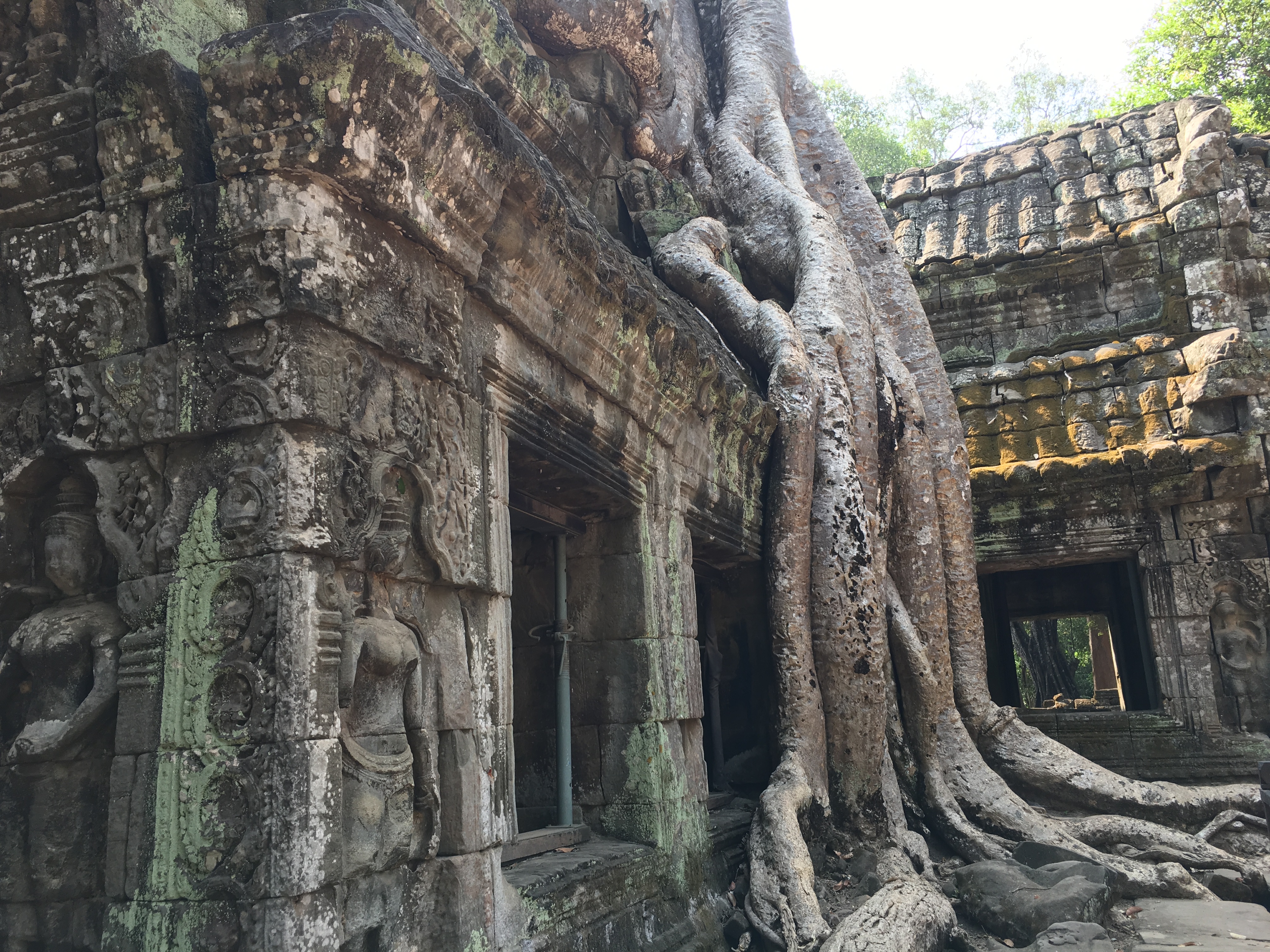
The scenery looks somewhat familiar to you?
Yes: it’s Lara Croft: Tomb Raider. Parts of the movie were shooted exactly at Ta Prohm! Any local will tell you about it.
(You remember the movie w/ Daniel Craig – still in his pre-007 era – playing a tomb raider: basically a good guy, but sometimes a little too fond of money … doesn’t matter: he survives!)
Coming now finally to the reliefs:
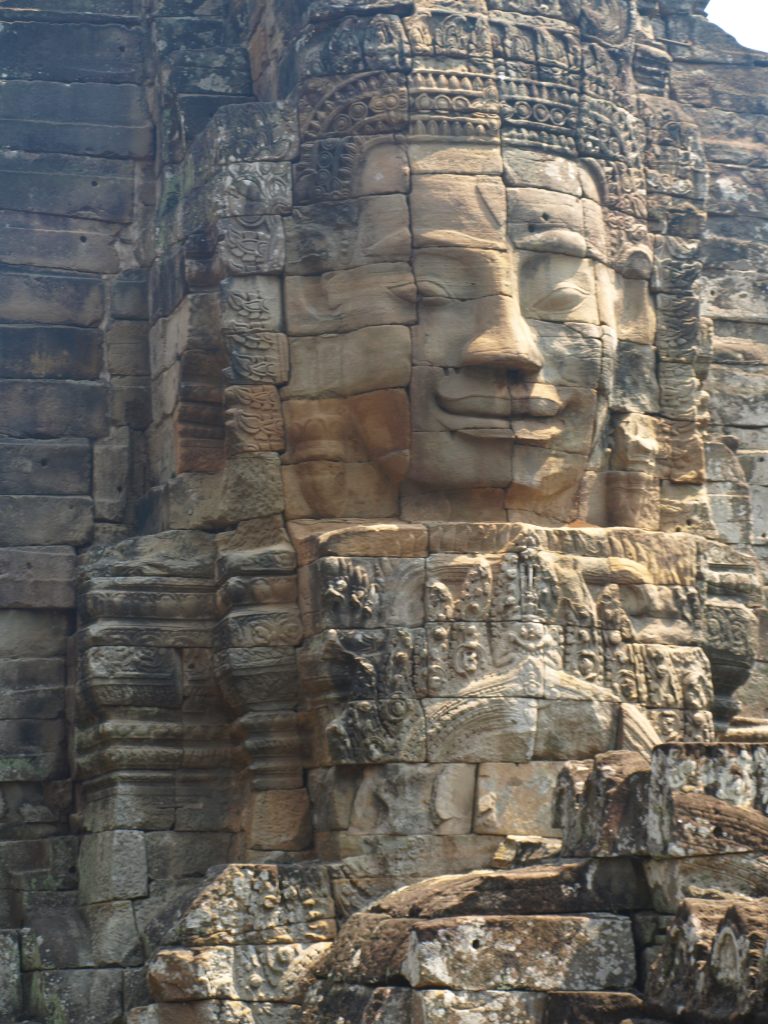
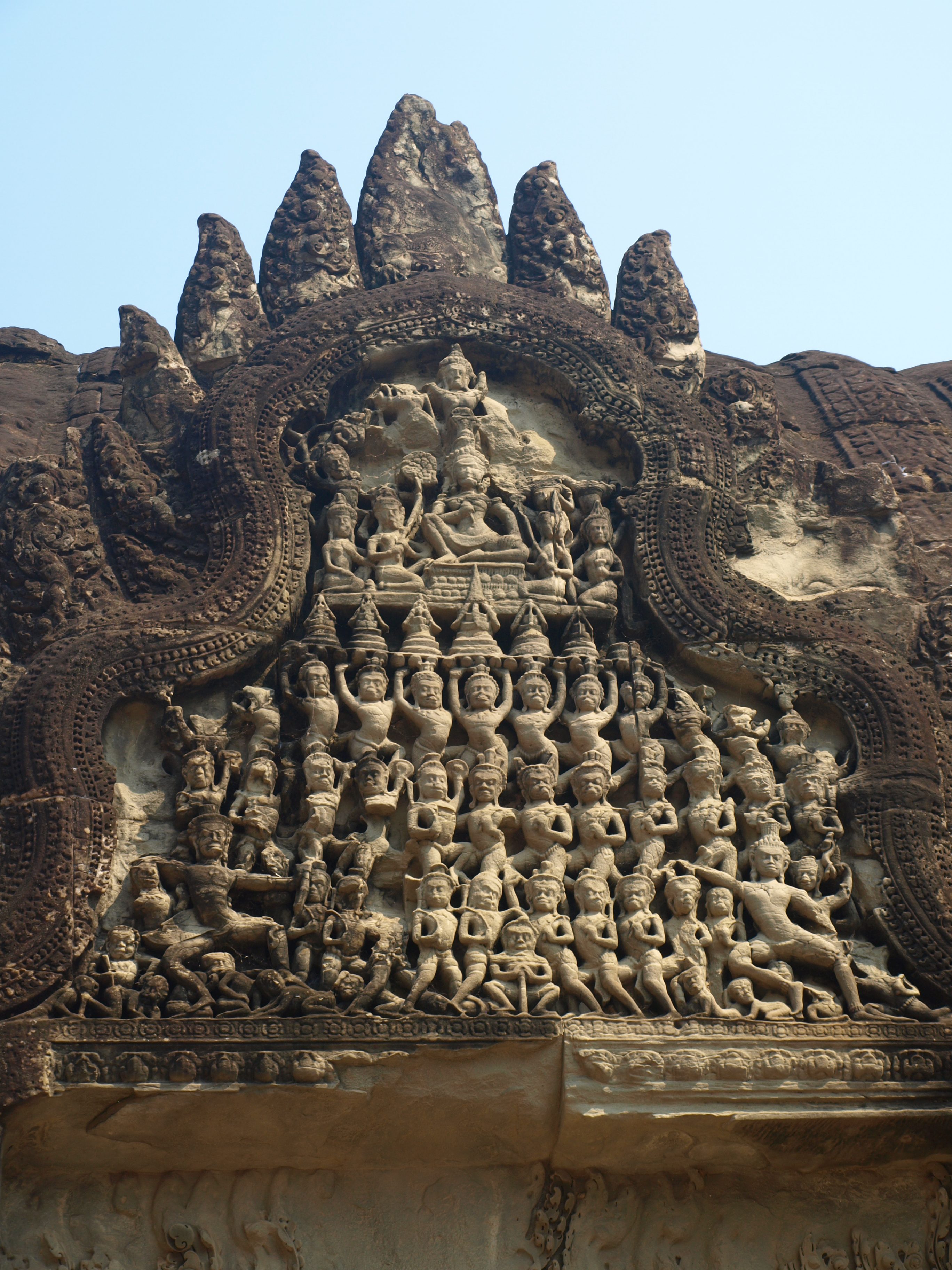
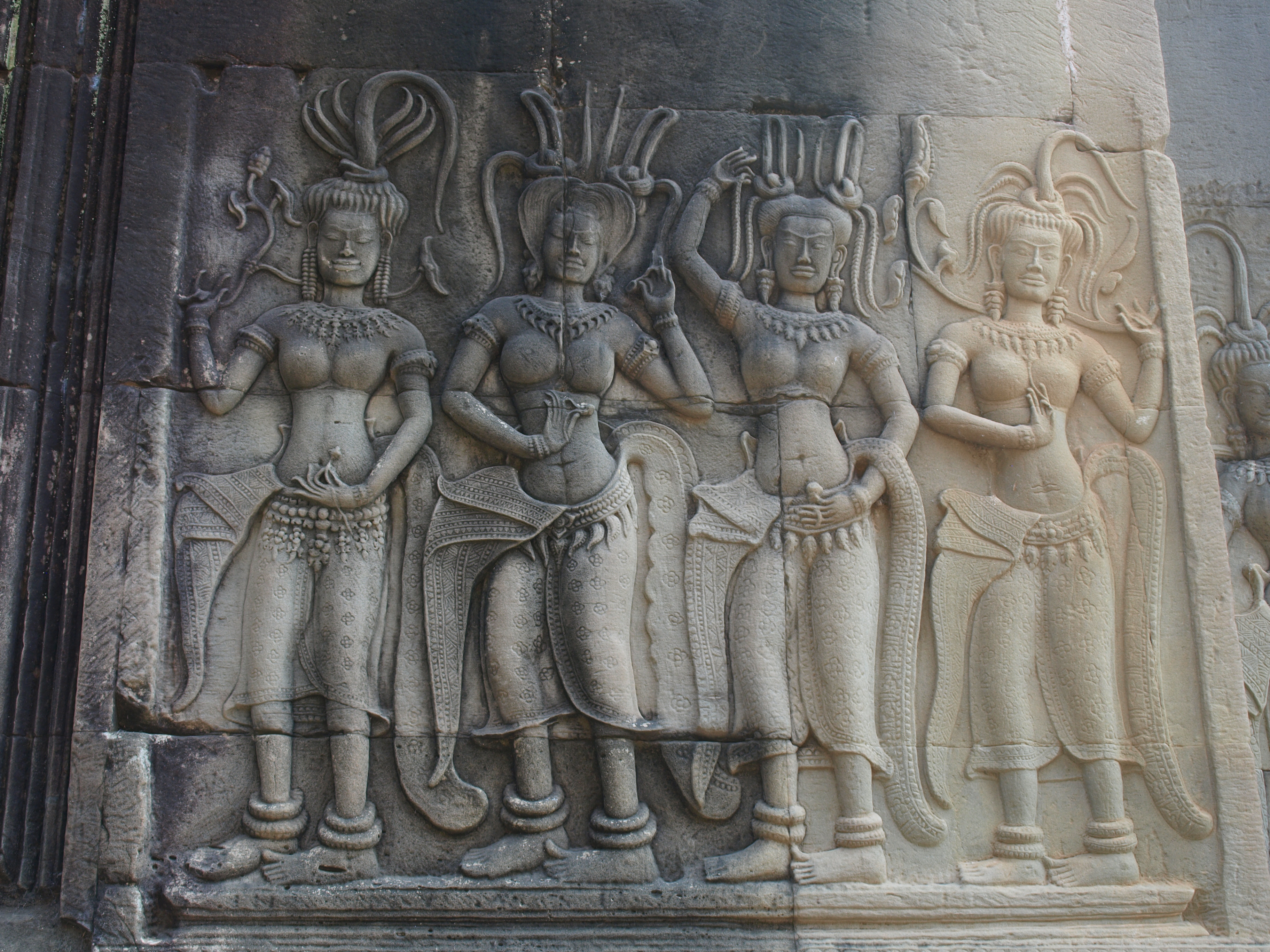
Some are quite coarse, some are very delicate …
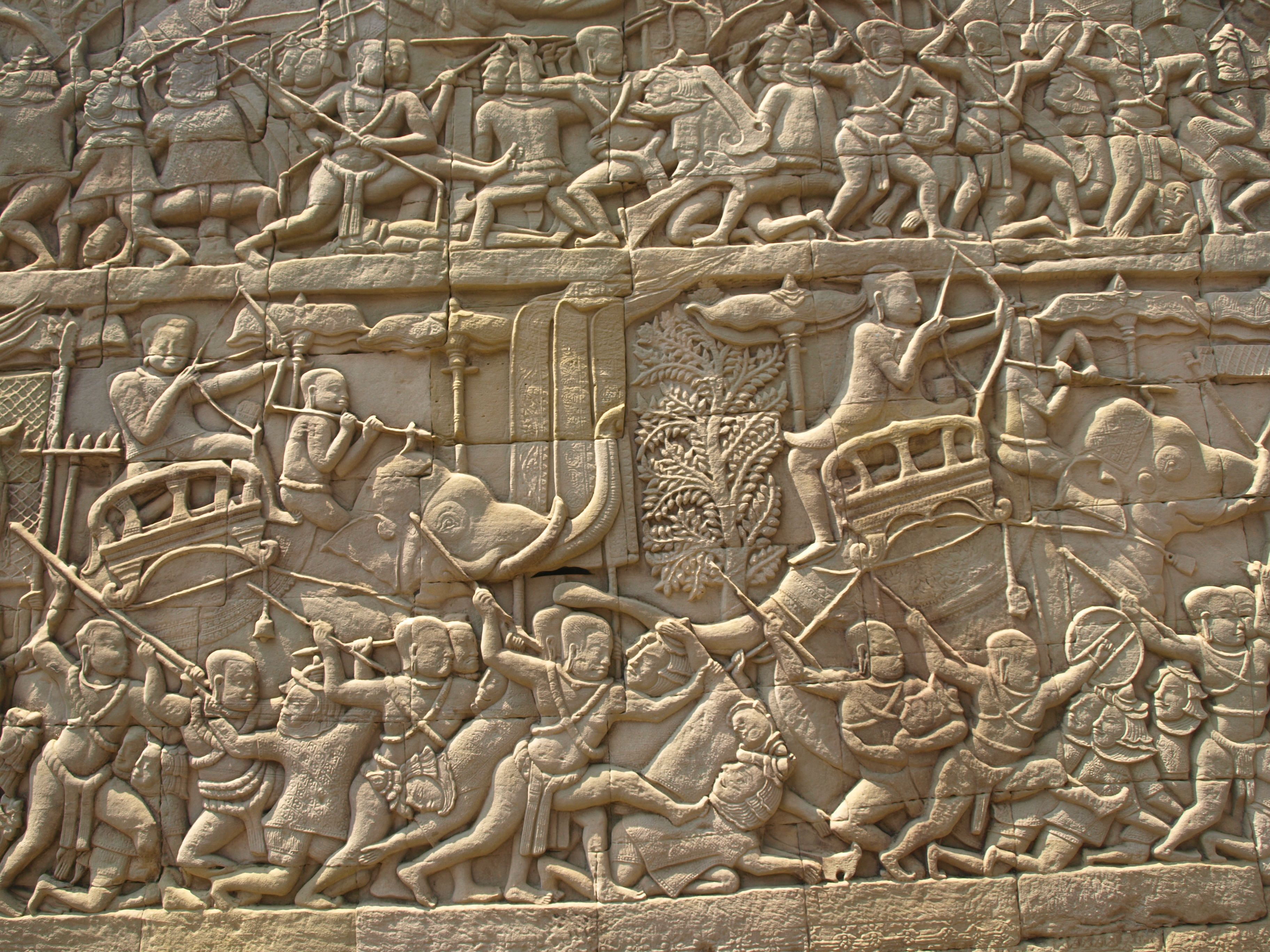
… & of course there are the guardians:
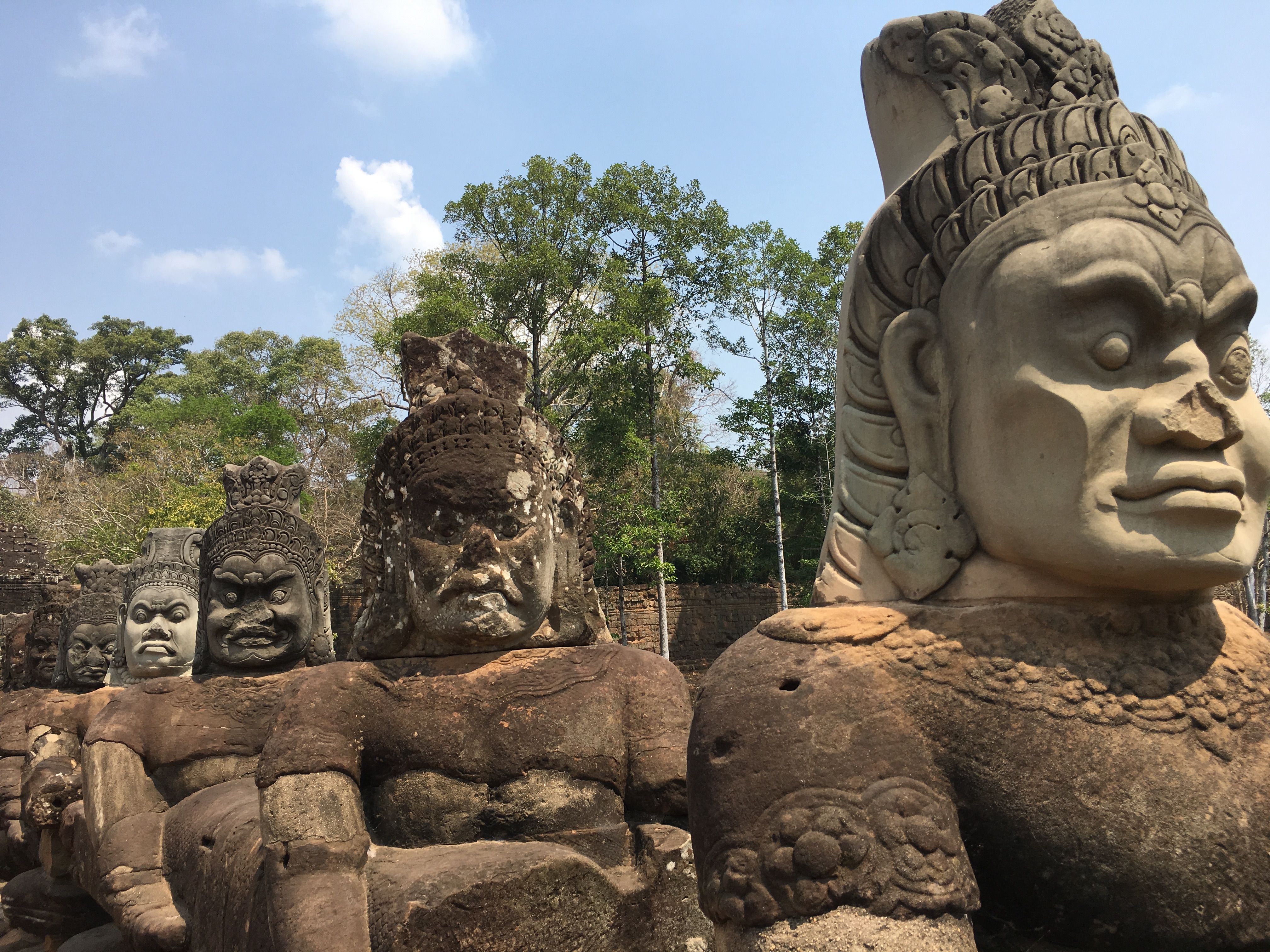
… time wasn’t merciful sometimes …
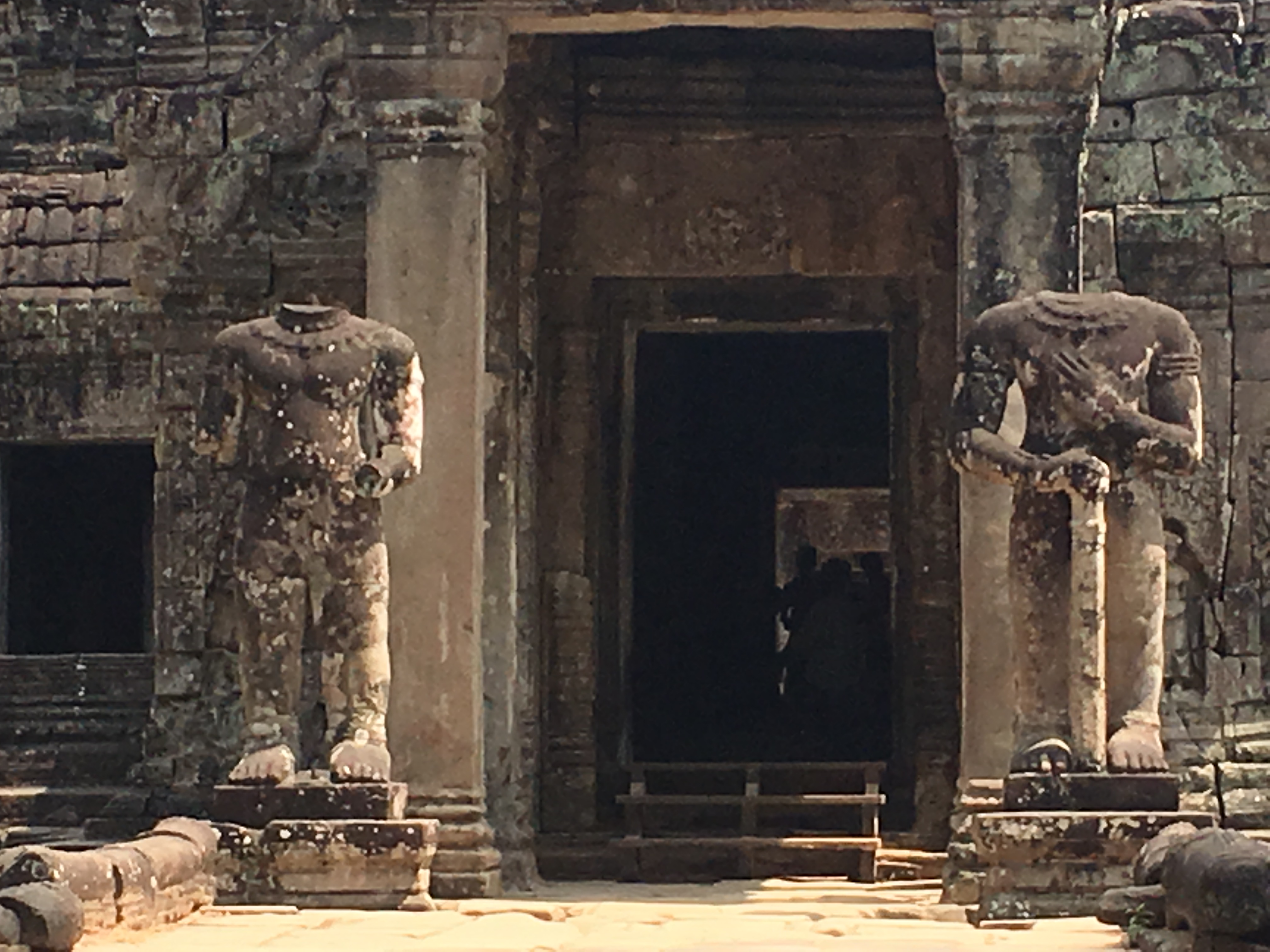
… & there are lots of photos I’d like to add (we didn’t cover so far Angkor Thom’s terraces & the water basins, the walls of the walled city, more guardians, the churning of the ocean of milk … & of course modern Siem Reap …), but post space is limited!
We also visited the Angkor museum in Siem Reap: it was a brilliant complement to our Angkor experience! Not only the exhibition of lots of fine & well preserved statues & reliefs you may enjoy in a cool museum atmosphere, but also some overview models of temples (especially Angkor Wat) giving you another impression of the Angkor vastness & the allover symmetries! (There is also the Hall of 1000 Buddhas which you shouldn’t miss!)
Almost near the end: the Buddha altar in our hotel …
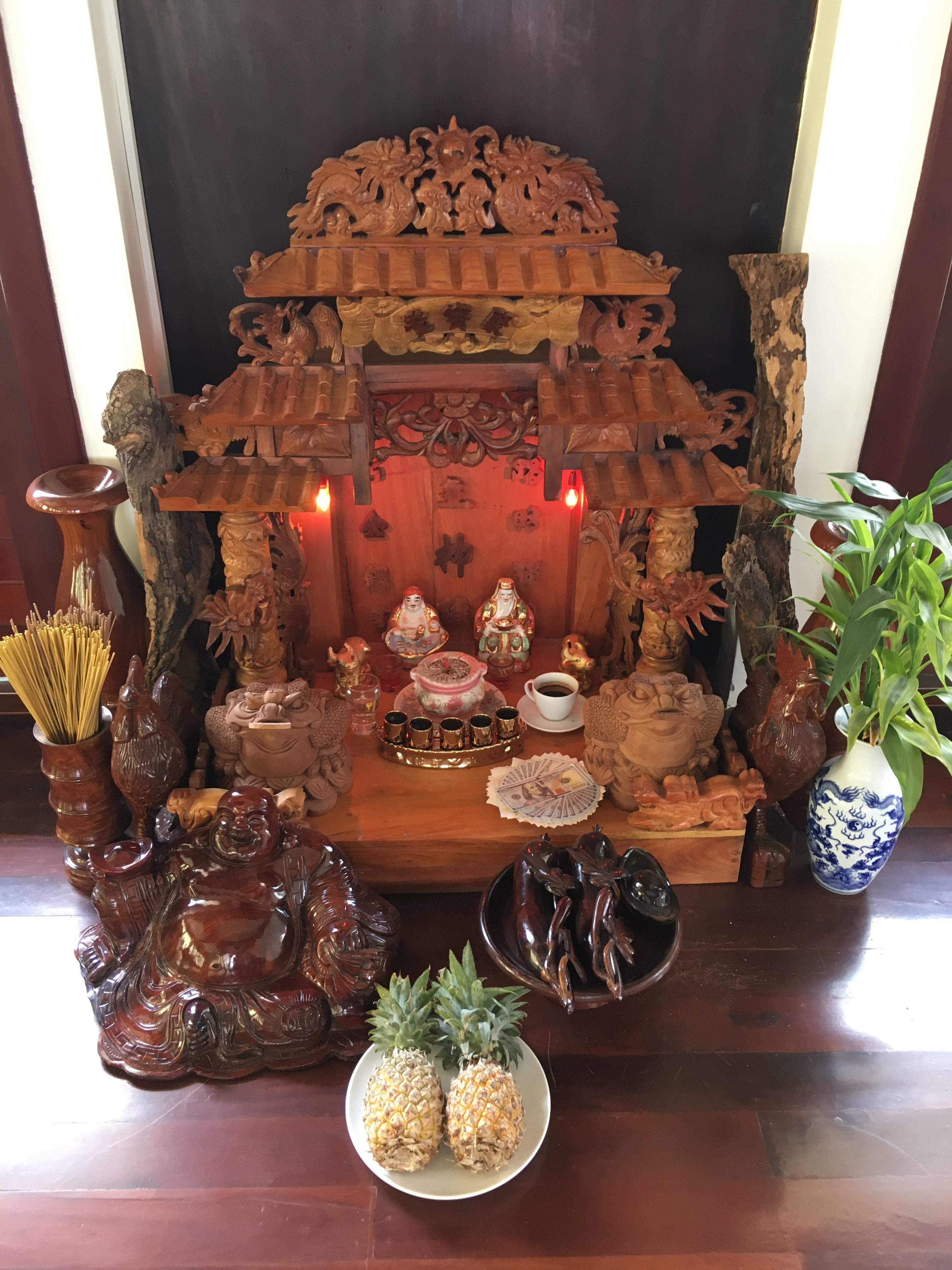
You’ll find such altars everywhere in Siem Reap inside & outside … (it’s the same in Bangkok by the way).
Now let’s close this post w/ the Good-bye Buddha (my choice of name!).
